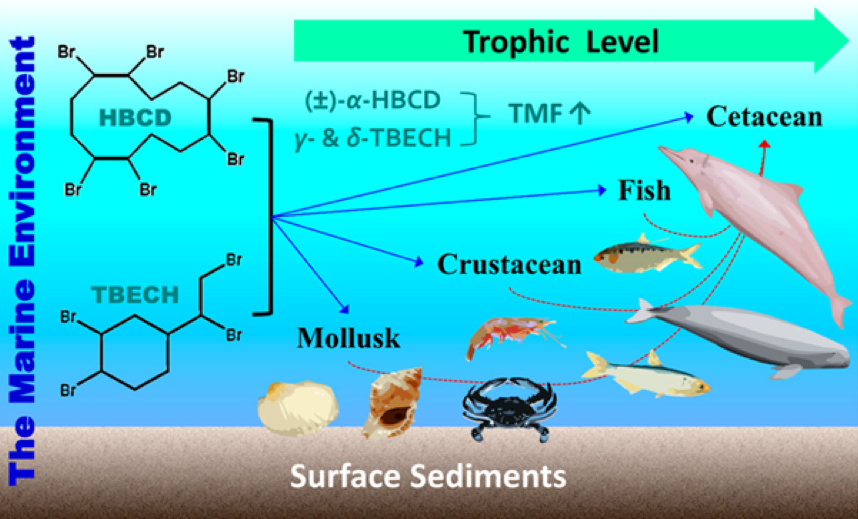Involved Members: Prof. Paul Kwan Sing LAM, Dr. James Chung Wah LAM, Dr. Phoebe Yuefei RUAN
Emerging chemicals of concern (ECCs) encompass a wide range of man-made chemicals that are in use worldwide and indispensable for modern society. The phasing out of many legacy environmental pollutants, most of which are persistent organic pollutants (POPs), has resulted in the compensatory production and use of their alternatives, and these replacements constitute a large part of ECCs, being inevitably released into the environment. The toxicities of some of these replacements are evidenced to be comparable or even higher than the legacy chemicals, many of which are endocrine-disrupting and carcinogenic chemicals. ECCs also include pharmaceuticals and personal care products (PPCPs), phycotoxins, nanoparticles, etc. that have been detected in the environment and may cause ecological and human health impacts (at low levels), which typically are not regulated under current environmental legislations. Environmental data on the majority of ECCs are limited, and relevant analytical methods are not well established. Due to heavy industrialization and urbanization in the Pearl River Delta over the past decades, high levels of recalcitrant pollutants have been reported in this region, which were eventually released to the Pearl River Estuary and ended up in the South China Sea.
In the light of the above, we developed and validated gas chromatography−mass spectrometry (GC−MS) and liquid chromatography−triple quadrupole mass spectrometry (LC−MS/MS) methods for the simultaneous determination of 16 stereoisomers of novel chiral halogenated flame retardants (HFRs) and for the trace analysis of chiral PPCPs from 3 therapeutic classes covering 22 stereoisomers, which were reported for the first time worldwide. Using these methods, we investigated the seasonal occurrence, mass balance, and fate of chiral HFRs and PPCPs in different sewage treatment systems in Hong Kong, where a preliminary screening of chiral HFRs transported by microplastics was also conducted; we also applied these methods to study the stereoisomer-specific trophodynamics of these chiral ECCs in a subtropical marine food web in the Pearl River Estuary and Hong Kong waters. Our findings revealed that two groups of ECCs, HFRs and PPCPs, were widespread in the investigated region, present in sewage, sludge, seawater, sediment, and marine biota; chiral HFRs exhibited trophic magnification in the investigated food web, while chiral PPCPs underwent trophic dilution; Hong Kong residents, especially children, might undergo high health risk due to dietary exposure to HFRs via seafood consumption.

We developed and validated analytical procedures and applied suspect/non-target screening techniques using quadrupole time-of-flight mass spectrometry (QTOF) for a much wider range of new/unknown perfluoroalkyl and polyfluoroalkyl substances (PFASs); using this method, we investigated the pollution status and temporal trends of legacy and emerging PFASs in two species of resident marine mammals from the South China Sea, and 44 PFASs from 9 classes were additionally identified by QTOF, among which 15 compounds were reported for the first time in marine wildlife; an emerging PFAS, 6:2 chlorinated polyfluoroalkyl ether sulfonate, exhibited increasing temporal trends of levels in Chinese white dolphins and finless porpoises, and could have possible adverse effects in terms of reproductive injury potential on most of the investigated cetaceans.
All these works can benefit the understanding of the contribution and significance of ECCs as a hazard to ecological and human health, and help propose regulatory measures to protect coastal environments of south China.
Reference:
Ruan, Y., Wu, R., Lam, J.C.W., Zhang, K., Lam, P.K.S. (2019). Seasonal occurrence and fate of chiral pharmaceuticals in different sewage treatment systems in Hong Kong: Mass balance, enantiomeric profiling, and risk assessment. Water Research, 149, 607−616.
